Today's Patreon-fueled shout-out is for the Plant Northern Piedmont Natives Campaign, an initiative that wants you to grow native plants in yards, farms, public spaces and gardens in the northern Piedmont. Native plants provide habitat, food sources for wildlife, ecosystem resiliency in the face of climate change, and clean water. Start at the Plant Northern Piedmont Natives Facebook page and tell them Lonnie Murray sent you!
In this installment:
A look at the link between housing and transportation costs
Charlottesville City Council reviews possible changes to bus routes owned and operated by the Charlottesville municipal government
New campaign finance reports are in local races including Albemarle County and Charlottesville
The latest campaign finance reports have been filed with the Virginia Department of Elections, as reported by the Virginia Public Access Project. Let’s start with Albemarle County.
Incumbent Jack Jouett District Supervisor Diantha McKeel raised an additional $6,522 during the period and spent $9, leaving her campaign with a balance of $32,056 as of May 27. McKeel is a Democrat who currently faces no opposition on the November 2 ballot for a third term.
Incumbent Rio District Supervisor Ned Gallaway raised $10,150 in the period, with $10,000 of that coming from a single corporate donor known as Seminole Trail Management LLC. Gallaway spent $5 in the period and has a cash balance of $15,809. Gallaway is a Democrat who currently has no opposition on the November 2 ballot for a second term.
Newcomer Jim Andrews raised $10,139 during the period, including a $5,000 contribution from John Grisham. He spent $4,180 during the period with the majority of that going to pay for his campaign manager, Patty Haling. Andrews has a balance of $30,507 as of May 27. Andrews is running as a Democrat and currently faces no opposition on the November 2 ballot. The winner of the race will succeed two-term incumbent Liz Palmer.
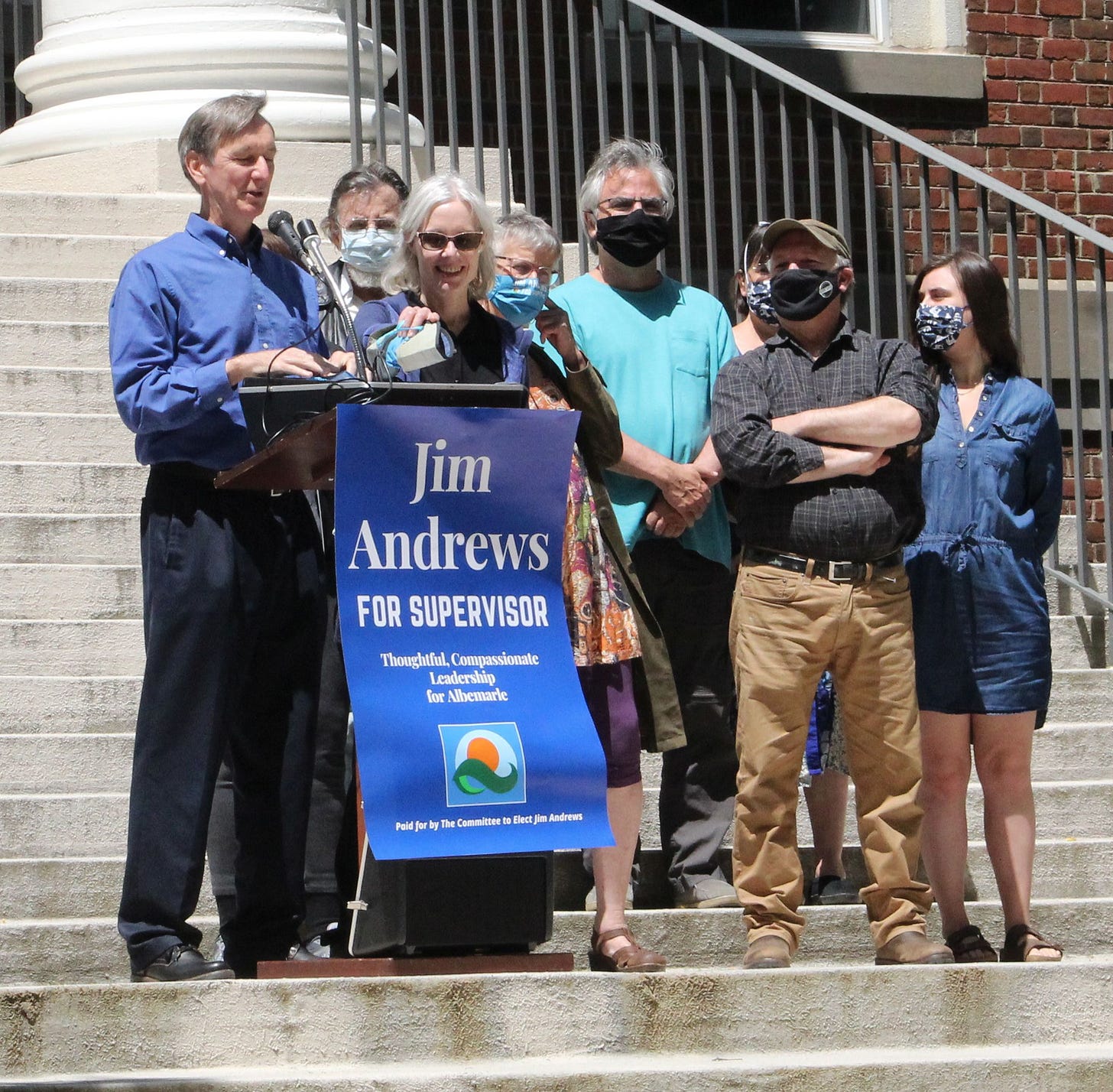
In Charlottesville, Brian Pinkston reported $29,098 in contributions, including $7,325 in in-kind contributions. That means someone or some business offered services or a product for campaign purposes. In-kind donations include $3,500 from Lifeview Marketing LLC and $2,750 from Local Jurisdiction Consulting LLC. Pinkston also loaned himself $8,348 and raised $13,425 in cash. The candidate spent $29,763 during the period and had an ending balance of $24,074.
Juandiego Wade raised $13,126 during the period, all in cash. The top donor is the Realtors Political Action Committee of Virginia. He spent $22,151 and had an ending balance of $32,626.
Carl Brown raised significantly less money with $1,675. He spent $979 and had a balance of $720 as of May 27, 2021.
Independent Yas Washington reported no money raised or spent with no cash balance. VPAP did not have any report for Charlottesville Mayor Nikuyah Walker, an independent who announced in late May that she would seek an additional term.
For the first time, members of the public can register to receive emergency notifications via text from the University of Virginia. Text “UVA” to 226787 to enroll in the program.
“The types of emergencies for which an alert would be issued include, but are not limited to, tornadoes, building fires, hazardous materials releases and violent incidents. Alerts are sent for emergencies in both the academic division and UVA Health,” reads a press release about the information.
Previously, the service was only available for people directly associated with UVA.
At some point this year, we’ll know exactly how many people are believed to live in our communities when the U.S. Census is released. But, projections from the Weldon Cooper Center at the University of Virginia as well as their yearly estimates depict a growing region. As the cost of housing in Charlottesville and Albemarle’s urban ring continues to increase, many will choose or have already chosen to live in communities half an hour away or more. Data from the Census Bureau’s American Community Survey shows the vast majority of people commute to work in a single occupant vehicle? But does that have to be the case?
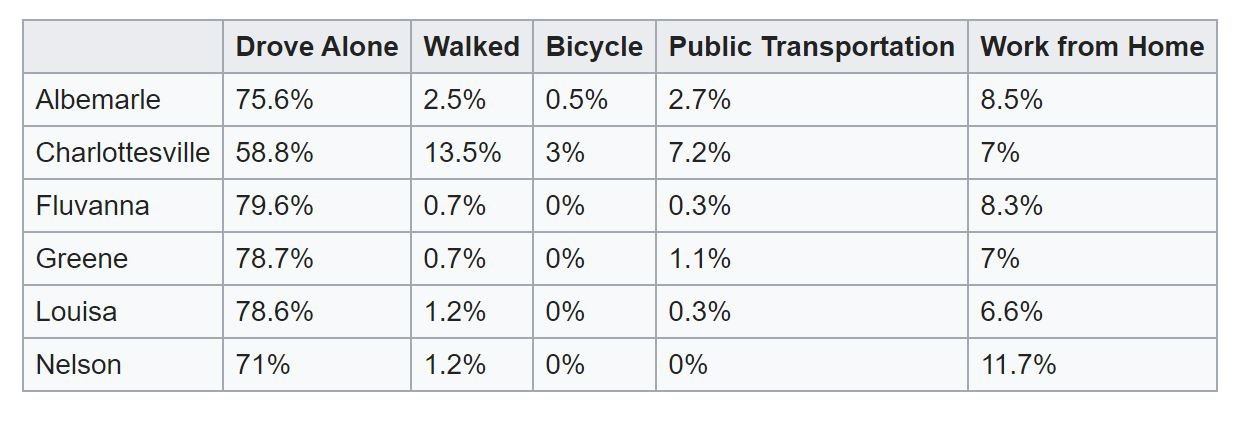
In May, the Central Virginia Regional Housing Partnership held a panel discussion on the topic. For background, housing is to be considered affordable if rent or a mortgage payment makes up thirty percent or less of household expenditures. Households that pay more than that are considered stressed.
Todd Litman is a founder and the executive director of the Victoria Transport Policy Institute. He said transportation costs also have to be factored in.
“It works out that a cheap house is not truly affordable if it has particularly high transportation costs [and] if it’s located in an area where people have to spend a lot of time and money traveling,” Litman said. “A lot of experts now recommend that instead of defining affordability as 30 percent of household budgets to housing, it’s defined as 45 percent of household budgets dedicated to housing and transportation combined.”
Litman said transportation costs are more volatile for low-income households because of the unpredictability of fuel prices and maintenance costs.
Stephen Johnson, a planning manager with Jaunt, said the cost of time must also be factored in.
“If I can only afford to take public transit, but that means my commute to work is going to take five to ten times longer, then that’s time that I’m losing to spend on other things,” Johnson said.
Johnson said people also can lose jobs if a transit connection doesn’t work out. He said this community has public transit options, but they are not compelling for many.
“When we put ourselves in the shoes of somebody’s who is deciding to take transit or drive, there are four factors that one would consider,” Johnson said. “The first would be the financial cost. The second would be the time cost. The third would be reliability. Can I rely on getting there on time? The fourth I think would be flexibility. Will my transportation allow me to make a last-minute change to my schedule? To travel with a friend, or to bring home a bunch of shopping.”
Johnson said public transit is cheaper to use than driving, but the other three factors are more difficult. He said transit in the area could be reformed by greater investments and better planning.
“An Albemarle planner might come to me and say ‘we’ve got this community, it’s got a lot of cul-de-sacs, a lot of houses, and we’re really struggling with congestion. Can you put a public transit band-aid on this and fix it?’” Johnson said. “In that case, the game board is already set and there’s only so much we can do as a player but I think if we can expand our idea of what transit planning is, when we think about things like density, how can we take those A’s and B’s and cluster them together so that when we put a bus out there we can cover a lot of trips?”
Litman said a goal is to not necessarily encourage people to go car-free, but to work to create areas where more trips can be taken in a walk, a bike-ride, or by getting on the bus. This was more common before the middle of the 20th century.
“So if you go back to the older neighborhoods, they’re all very walkable,” Litman said. “They have sidewalks on all the streets. You have local schools, and park, and stores that were designed. The neighborhood was organized around the idea that at least some people will rely on walking. We lost that for a while and now there’s a number of planning movements and approaches that are trying to establish that.”
Litman said developers and local governments should be working together to encourage more than just single-family housing.
“If you’re building new neighborhoods, those that allow what we call ‘the missing middle’, compact housing types like townhouses and low-rise apartments are going to be far more affordable and therefore far more inclusive,” Litman said.
But back to transit. Jaunt mostly provides on-demand service, but does have some fixed-route service. Johnson explained what works best in what situation.
“Fixed route options are much more appropriate public transit option for dense urban cores and we see that in downtown Charlottesville and urban Albemarle County,” Johnson said. “Demand response is a much more appropriate technology for more rural areas and that’s the majority of Jaunt’s service area are the counties around Charlottesville and Albemarle.”
However, Johnson said transit in urban areas could be transformed if systems adopt on-demand tech. Jaunt has been working on a pilot project to provide service to Loaves and Fishes on Lambs Road, a site not accessible via Charlottesville Area Transit.
In this community, there are three transit systems. They are the Charlottesville Area Transit (CAT), the University of Virginia Transit Service (UTS) and Jaunt. In September, BRITE will begin the Afton Express service between Staunton and Charlottesville. How do all of these many pieces come together? Here’s Stephen Johnson again.
“Charlottesville and Albemarle are working together through the Regional Transit Partnership to try to help build a cohesive vision there of how Jaunt and Charlottesville Area Transit and UTS can all work together to provide a cohesive transit system for the residents of Charlottesville and Albemarle,” Johnson said.
You can view the entire video on the Thomas Jefferson Planning District Commission’s YouTube page.
Up next, Charlottesville Area Transit updates City Council on upcoming service changes and the future.
Now it’s time for another Substack-fueled public service announcement. The Central Library in downtown Charlottesville will host a summer reading kick-off from 10 a.m. to 12 noon this Saturday, the 5th of June. Readers of all ages can come by and learn about the Jefferson Madison Regional Library Summer Reading Program. While here you can also enjoy music from the Charlottesville Municipal Band's Clarinet and Saxophone Ensembles and the JMRL Friends of the Library will be hosting a $5 per bag Pop-Up book sale under the tent at the Central Library. All events are outside, so if it rains, the event will be canceled.
Finally today, the city of Charlottesville is the sole owner and operator of Charlottesville Area Transit, and Albemarle County pays the city for service each year. Ridership on CAT has declined significantly in recent years. In 2013, ridership was at 2.4 million. By 2018, that dropped to 2.05 million. (view presentation)
Garland Williams has been director since August 2019 and previously served as director of Planning and Scheduling for the Greater Richmond Transit Company.
Near the beginning of the pandemic, the city hired Kimley Horn to review the system to recommend changes to make it more efficient on the other side.
“This is not designed to be a total revamp of our system,” Williams said. “This was kind of stop-gap measure because as you know, over the last six year CAT’s ridership has been declining precipitously so what we’re trying to do right now is stop that, build a nice foundation, and then build from there.”
Williams said work on the CAT is happening at the same time that the Thomas Jefferson Planning District Commission is working on a planning effort for the long term.
As part of the more immediate work, the Connetics Transportation Group was directed to bring service to South First Street, bring service to the Center at Belvedere, and to restore Sunday service post pandemic. Jim Baker with Connetics Transportation explains a couple more directives.
“And getting more 30 minute or better service along some of the key corridors in the city,” Baker said. “Also there were a few routes pre-COVID that were running at worse than 60 minute frequencies so we didn’t want to have anything less than 60 minute frequencies. And then to get the trolley, which is such a key part of the CAT system, back to a 15 minute frequency. That was a route where service frequencies were reduced because of COVID.”
Routes will need to be changed in the short-term to avoid the Downtown Transit Center due to the eventual replacement of the Belmont Bridge. Under the proposal, Albemarle would for about 35 percent of service.
Route 2 would be split into two services, restoring service to Piedmont Virginia Community College and extending service to Mill Creek Drive and Monticello High School. One of the routes will also travel down Avon Street Extended in both directions.
“That change will make it easy to access the park and ride lot that’s sitting right beside CAT headquarters,” Williams said. “So it’s another opportunity potentially to use the route for our employees, city employees, to get to and from downtown.”
Route 3 would also be split into two, with one half traveling from Southwood to downtown and the other serving downtown and Belmont. This second route would come within walking distance of the Broadway Street corridor in Albemarle County.
“We really wanted to get 30 minute all-day service on 5th Street all the way down to Albemarle County’s office building,” Baker said.
Route 5 would be modified to travel between the UVA Hospital to Fashion Square Mall. Currently the northern terminus is Wal-Mart. Route 7 would be extended to the Rio Hill Shopping Center and the Wal-Mart but will no longer serve Stonefield.
Service on Prospect Avenue would be moved from Route 6 to a new Route 8, which would now travel between Stonefield and the Willoughby Shopping Center via the UVA Hospital.
“We thought this would be an opportunity to create a new crosstown route from south Charlottesville for residents on the south part of town to get up to the U.S. 29 corridor without having to go through downtown and without having to make a transfer,” Baker said.
Route 9 would be revamped to be another north-south service traveling between Fashion Square Mall and downtown via the YMCA in McIntire Park. Service to UVA Hospital would be dropped as would service near Charlottesville High School. Route 10 would no longer serve Stony Point Road to save time. Route 11 would serve the Center at Belvedere.
“That extension to the Center is an obligation that the city has to the Center so this answers that part of the agreement to provide public transportation,” Williams said.
The route changes will have to be reviewed to see if there are any violations of what’s known as Title VI, and there will need to be a public comment period.
Williams said CAT is also working on securing spaces at 5th Street Station for park and ride, as well as using Route 9 to access empty spaces at Fashion Square Mall for that purpose. Earlier in the work session, Council was briefed on a potential parking garage downtown.
“But we’re also working with Kimley Horn at a longer term study where we’re looking at the potential for some park and ride locations throughout the region, especially up on U.S. 29,” Williams said.
No decisions were made at the meeting. And coming up in a future episode of the program, more on transit from the May 27 meeting of the Regional Transit Partnership. Stay tuned!
Thanks for listening! Please share with someone you think would benefit from this program. The content is free, but subscriptions through Substack will keep it going. And Ting will match your payment!

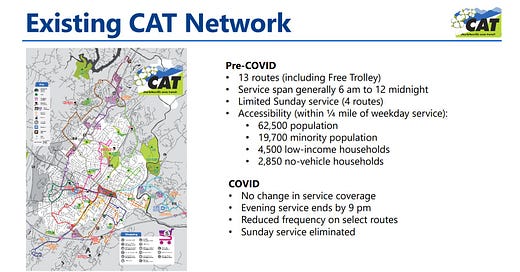



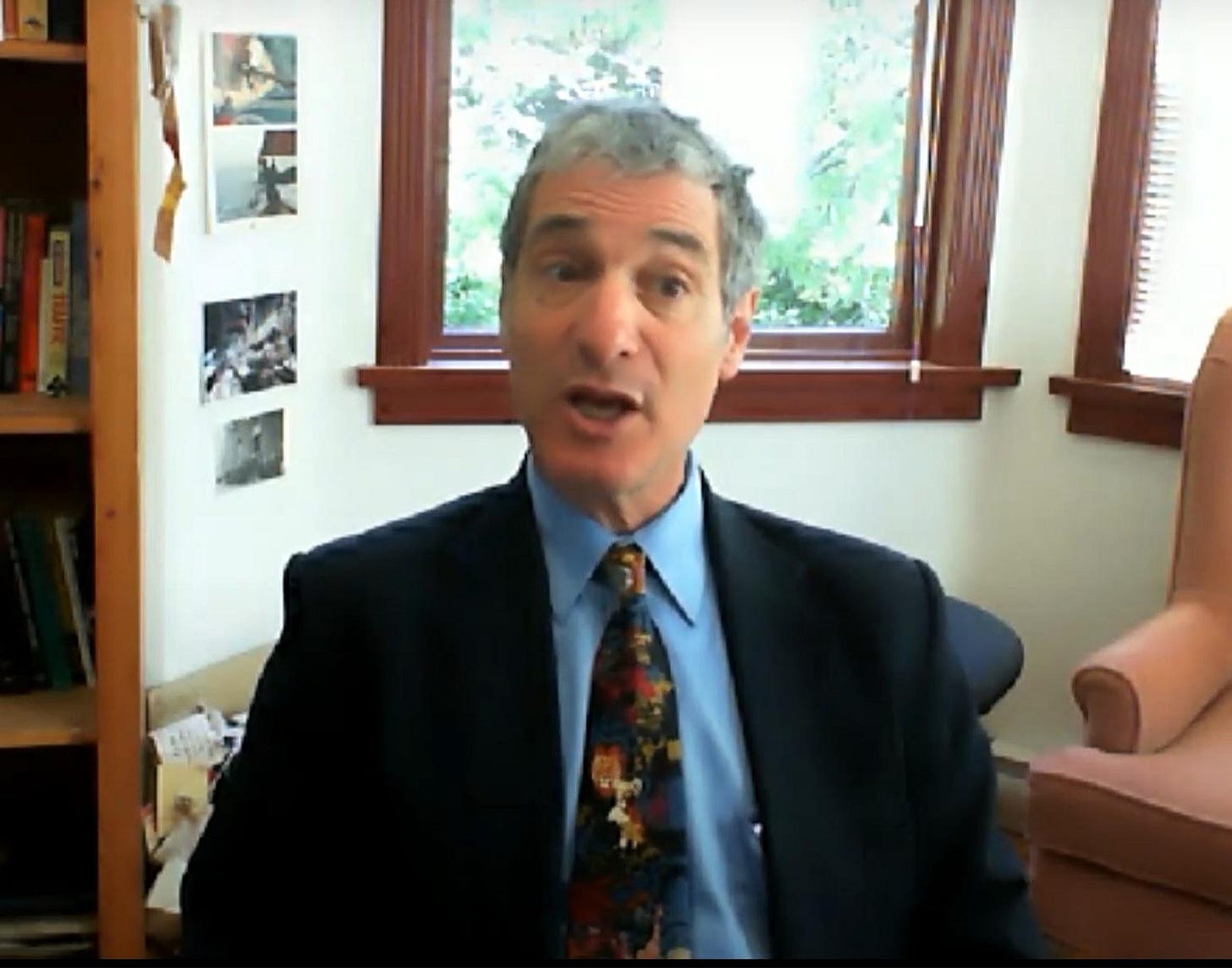

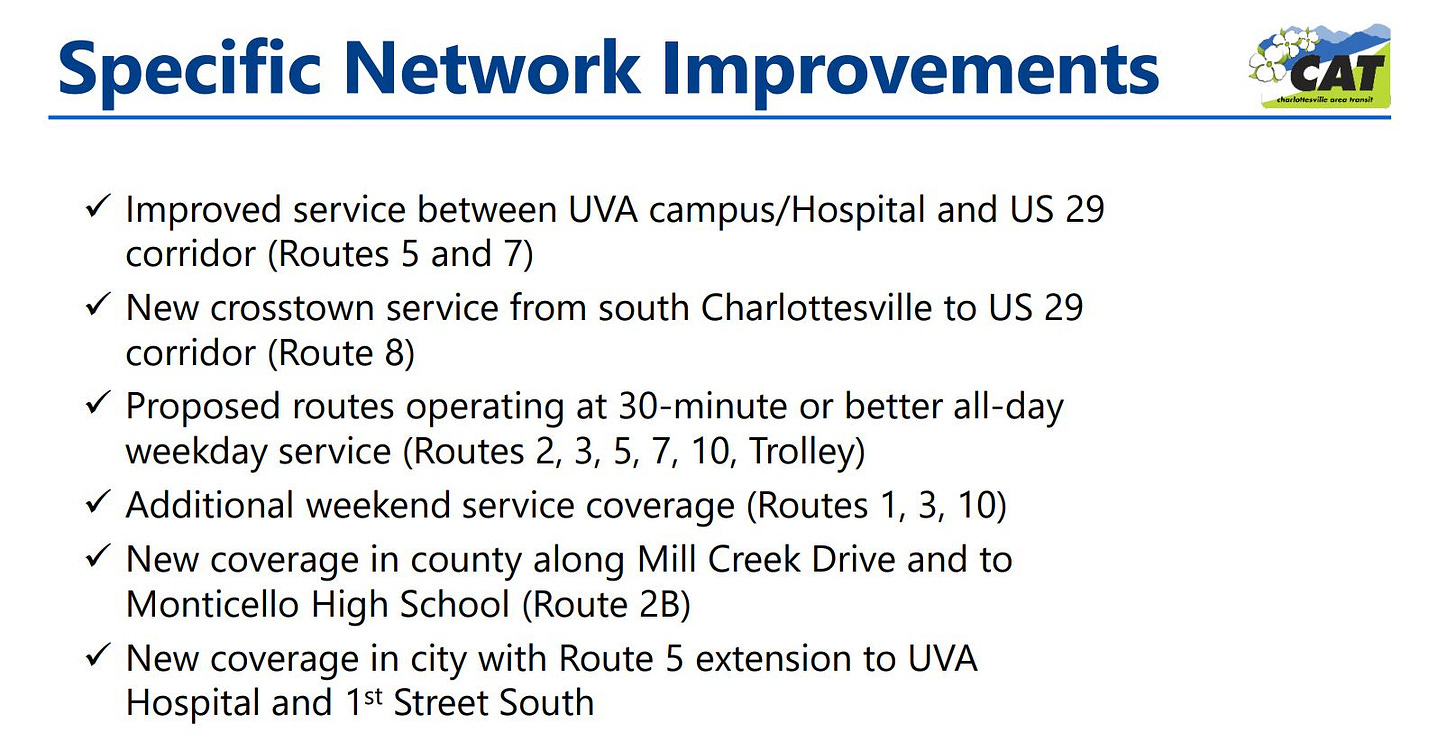
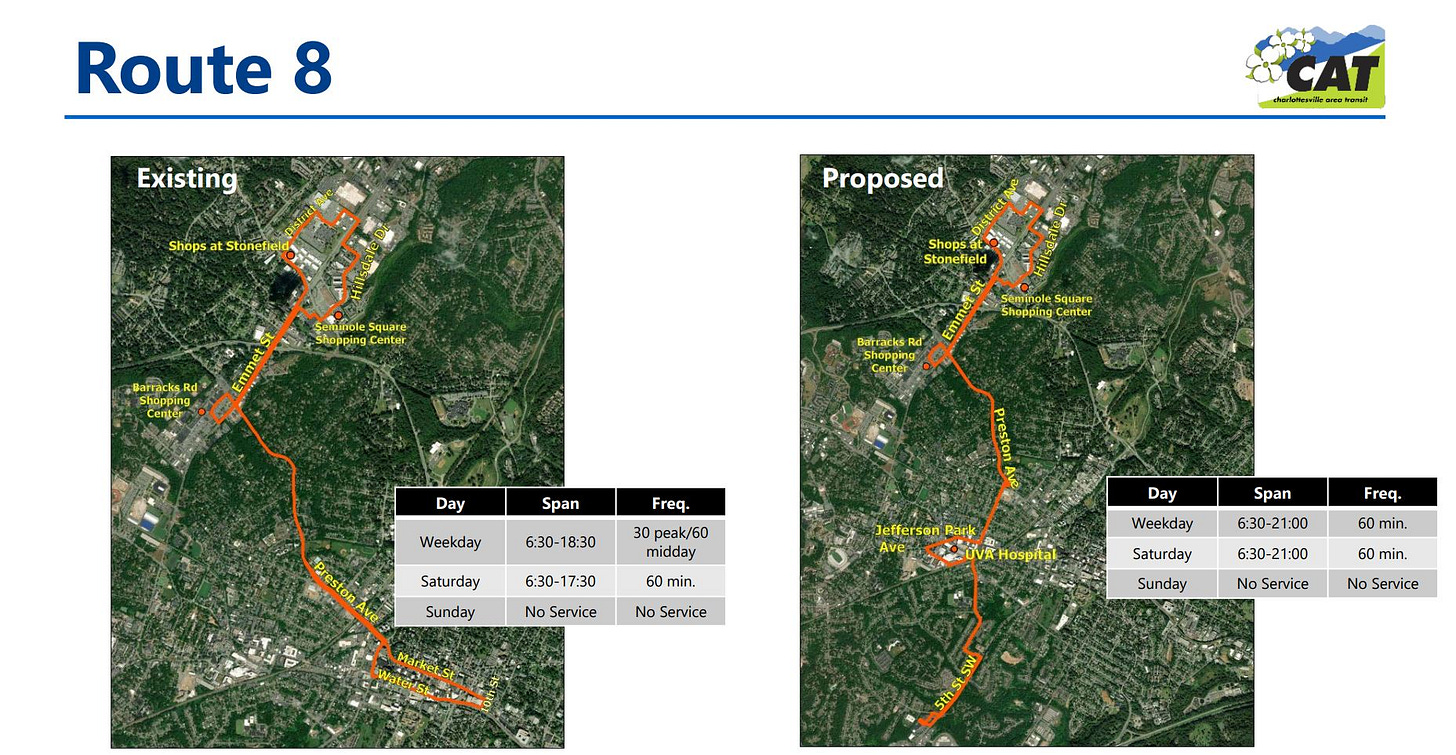








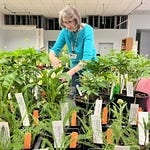
Share this post